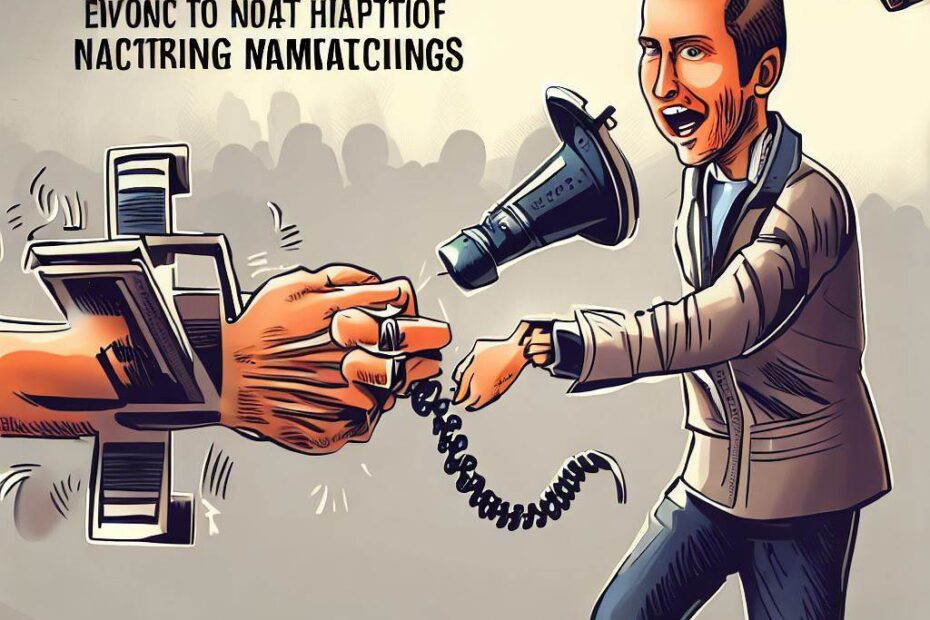Manipulative sales tactics have been used for a long time to mislead or deceive people. These tactics can take many forms, but manufactured logic, the circular argument or begging the question, and false evidence are the most common ones. In this article, we will explore these three tactics and how they can be used to manipulate people. By being aware of these tactics, we can better protect ourselves from being manipulated and make more informed decisions. On a positive note, businesses can use the power of delaying the sales process to close more deals by strategically inserting media into the process. This approach can lead to increased sales and ultimately, help businesses become more successful. We will discuss how to apply this strategy in your business and create a more personalized and memorable experience for your customers.
Uncovering the Tactics of Shameless Manipulation: Manufactured Logic, Circular Arguments, and False Evidence

The practice of shameless manipulation is not new, and it involves various tactics that are designed to mislead or deceive people. In this context, three common forms of manipulation are manufactured logic, the circular argument or begging the question, and false evidence.
Manufactured logic is a tactic used to create a false sense of logic in an argument. It is a form of manipulation that involves the manipulation of facts or statistics to support a particular conclusion. For example, a marketer might use statistics to support a claim that their product is the best on the market, but these statistics may be misleading or even fabricated. In other words, the argument is not based on solid evidence or logical reasoning, but rather on a distorted version of reality.
The circular argument or begging the question is another common form of manipulation. This tactic involves using an argument that assumes the truth of the very thing that is being argued. For example, a marketer might argue that their product is the best on the market because it is the most popular, and it is the most popular because it is the best. This is a circular argument because it relies on the assumption that popularity is evidence of quality, and quality is evidence of popularity. The argument is not based on any objective evidence or logic, but rather on a circular reasoning that simply reinforces the original claim.
False evidence is perhaps the most insidious form of manipulation. This tactic involves using evidence that is either misleading or outright false to support a particular claim. For example, a marketer might claim that they are an expert in their field because they have been quoted in several magazines or books. However, this is not necessarily evidence of expertise, as anyone can be quoted in a magazine or book. The marketer may have simply paid for the quote or used their connections to get quoted. In other words, the evidence is not based on any objective measure of expertise or competence, but rather on a false sense of authority.
As you can see, shameless manipulation is a pervasive problem in modern society, and it can take many forms. The three most common forms of manipulation are manufactured logic, the circular argument or begging the question, and false evidence. By being aware of these tactics, we can better protect ourselves from being manipulated and make more informed decisions. Ultimately, the best defense against shameless manipulation is critical thinking and a healthy skepticism towards claims that seem too good to be true.
The Power of Delaying the Sales Process: Using Media to Close More Deals

The power of delaying the sales process can be a game-changer for businesses. By strategically inserting media into the process, companies can eliminate the need for manual labor and convince prospects to choose them as their preferred provider. This innovative approach can lead to increased sales and ultimately, help businesses become more successful.
The key to success with this strategy is to delay the sales process long enough to allow for the insertion of media. This means that businesses should not rush to close a deal and instead, take the time to create content that will engage prospects and convince them to choose their product or service.
The benefit of delaying the sales process is that it allows businesses to create a sense of urgency and exclusivity around their product or service. By delaying the sale, businesses can make prospects feel like they are part of a select group who have access to something special. This feeling of exclusivity can be a powerful motivator and can help businesses close more deals.
The use of media in the sales process is also key to this strategy. By using media such as videos, webinars, or e-books, businesses can create a more engaging and personalized experience for prospects. This approach can be especially effective in today’s digital age, where consumers expect personalized and interactive experiences.
The goal of this strategy is to become the salesperson who never has to sell. By using media to convince prospects to choose your product or service, businesses can eliminate the need for aggressive sales tactics. Instead, they can focus on creating a positive and memorable experience for their customers.
To apply this breakthrough strategy in your business, start by evaluating your current sales process. Identify areas where you can delay the sale and insert media to engage prospects. Consider creating a series of videos or webinars that educate prospects about your product or service and showcase your unique value proposition. Use social media and email marketing to promote your content and build anticipation around your offering.
Remember, the key to success with this strategy is to create a sense of urgency and exclusivity around your product or service. By using media to engage prospects and delay the sales process, you can create a more personalized and memorable experience for your customers. This approach can lead to increased sales, greater customer loyalty, and ultimately, a more successful business.
Conclusion
Shameless manipulation is a prevalent issue in modern society, and it can take various forms, including manufactured logic, circular argument or begging the question, and false evidence. To protect ourselves from being manipulated, it is crucial to be aware of these tactics and apply critical thinking and healthy skepticism when evaluating claims.
On the other hand, delaying the sales process and using media strategically can be a powerful tool for businesses to increase sales and become more successful. By creating a sense of urgency and exclusivity around their product or service and using personalized and interactive content, businesses can engage prospects and convince them to choose their offering without resorting to aggressive sales tactics. The key to success with this strategy is to identify opportunities to delay the sale and insert media, creating a positive and memorable experience for customers. With this approach, businesses can build greater customer loyalty and ultimately thrive in a competitive marketplace.
